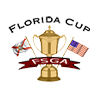Written by: Darin Green, Senior Director of Rules & Competitions
Summer is here and so are the daily thunderstorms. The likelihood of encountering temporary water on the golf course is high, and it is important to know what is temporary water and how to properly take free relief from it.
Under the Rules of Golf, the term “temporary water” is any temporary accumulation of water on the surface of the ground. Temporary water is normally the result of puddles from rain or irrigation, or an overflow from a body of water. Temporary water exists in the general area (fairways, rough, etc.), bunkers, and putting greens; however, it does not exist inside red or yellow penalty areas. Temporary water is one the four abnormal course conditions in the Rules.
Prior to 2019, temporary water was referred to as “casual water.” The term changed in 2019 because temporary water is more descriptive of the situation and the term translates better to other languages. .png)
Temporary water must visible at the lie of ball, area of intended swing, or area of intended stance. The water must visible before or after the stance is taken, not during. Some officials say “it’s the stance, not the dance” meaning that players typically shift their weight back and forth to see if water appears rather than taking their normal stance to see if there is water visible. If temporary water is visible before or after the stance is taken, then free relief is available under Rule 16.1. Free relief is not available simply because the ground is muddy or soft. Additionally, dew and frost are not temporary water.
If a player has interference from temporary water, and the ball does not lie in a penalty area, free relief is available. Before lifting the ball to take relief, a best practice is to find the relief area first, because sometimes the relief area may be in a worse location, and taking relief may not benefit the player. To take free relief the player must find the nearest point of complete relief from temporary water that is not nearer the hole and in the same defined area of the course. The nearest point of complete relief is normally in a higher location and sometimes can be just yard or two away and other times much farther. The player then may drop a ball within one club-length of that spot not nearer the hole. The golf ball may be cleaned before dropping, or the player may use another golf ball.
When a player’s ball lies on the putting green, interference additionally exists when temporary water is on the putting green and on the player’s line of play. When taking relief on a putting green, the player must place a ball at the nearest point of complete relief that is not nearer the hole.
With rain normally comes lightning in the summer; stay safe out there!





